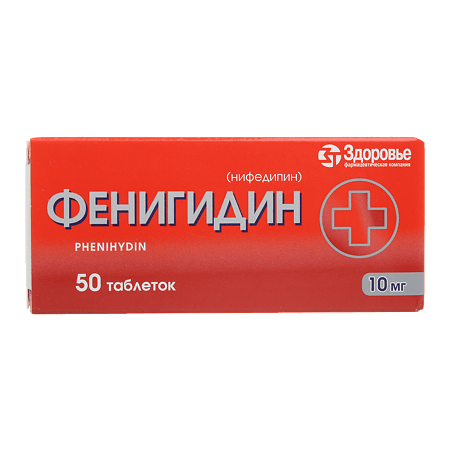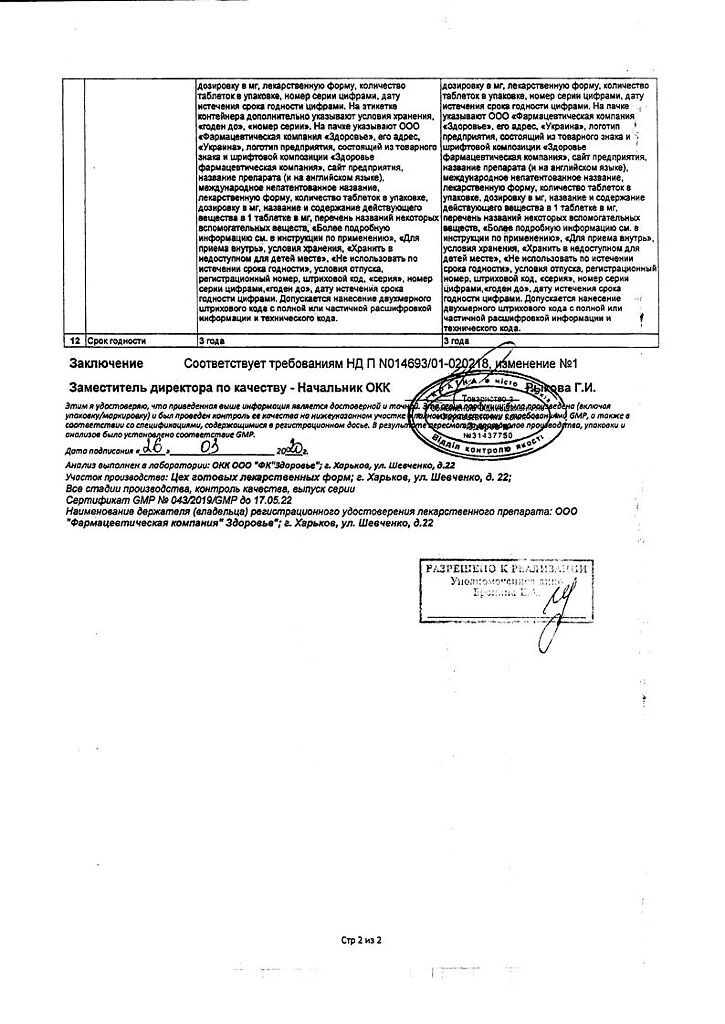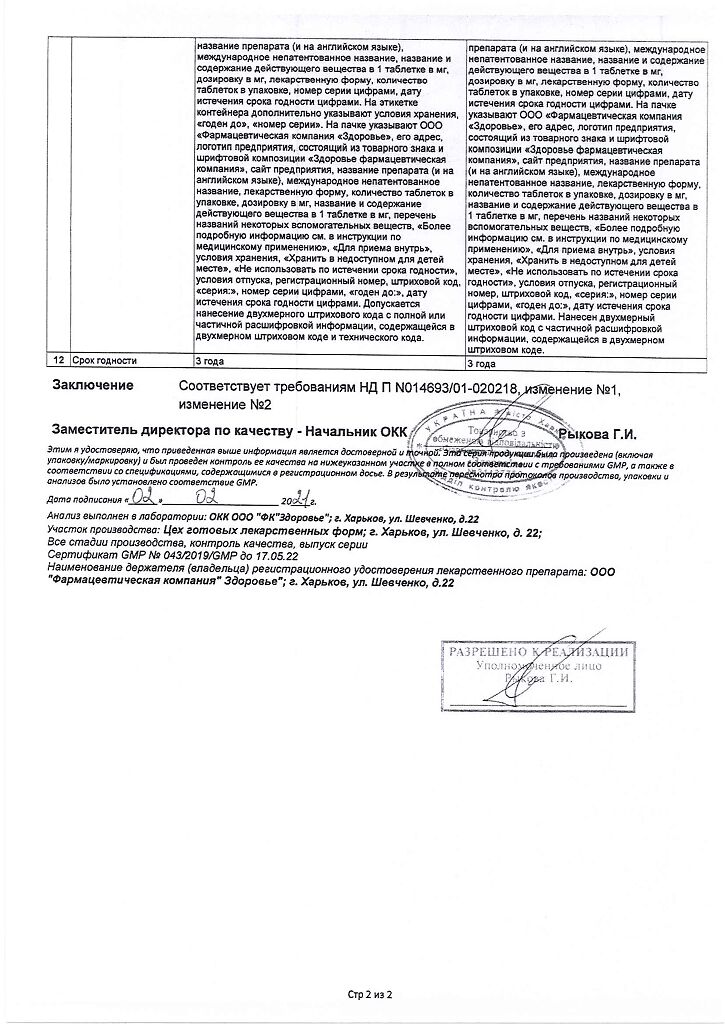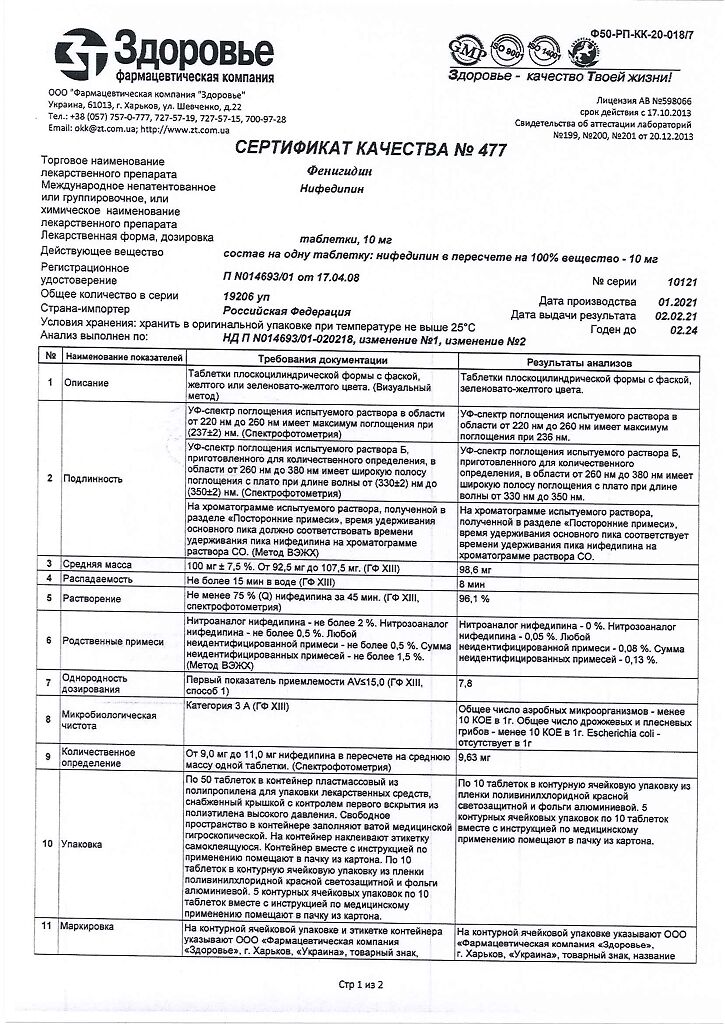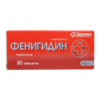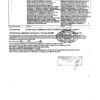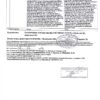No products in the cart.
Phenigidine, tablets 10 mg 50 pcs
€1.37 €1.14
Description
Pharmgroup:
Slow calcium channel blocker.
Pharm Action:
Selective BMCC, 1,4-dihydropyridine derivative. It has vasodilatory, antianginal and hypotensive effects. Reduces Ca2+ flow into cardiomyocytes and smooth muscle cells of coronary and peripheral arteries; in high doses it suppresses Ca2+ release from intracellular depots. Reduces the number of functioning channels without affecting the time of their activation, inactivation and recovery.
Disassociates the processes of excitation and contraction in the myocardium mediated by tropomyosin and troponin and in vascular smooth muscle mediated by calmodulin. In therapeutic doses, it normalizes the transmembrane Ca2+ flow disturbed in a number of pathological conditions, primarily in arterial hypertension. It does not affect the tone of veins.
It enhances coronary blood flow, improves blood supply to ischemic myocardial areas without bypass phenomenon, activates collaterals functioning. By dilating the peripheral arteries, it reduces myocardial pressure, myocardial tone, afterload, myocardial oxygen demand and increases the duration of LV diastolic relaxation. It has almost no effect on SA and AV nodes and has no antiarrhythmic activity. It increases renal blood flow, causes moderate natriuresis.
The negative chrono-, dromo- and inotropic effects are outweighed by reflex activation of the sympathoadrenal system and increased HR in response to peripheral vasodilation.
Time of action: 20 min – when taken orally, 5 min – when taking sublingual capsules contents; duration of action: 4-6 h for tablets and capsules, 12-24 h for prolonged forms.
Pharmacokinetics:
Absorption – high (more than 92-98%). Bioavailability is 40-60%. Eating increases bioavailability. It has a “first pass” effect through the liver. Retarded forms provide gradual release of the active substance into the systemic bloodstream. TCmax and Cmax depend on the dosage form: 1-2 h for capsules (in case of sublingual administration – 0.5-1 h); 1-3 h and 65 ng/ml for 10 mg tablets; 1.6-4.2 h and 47-76 ng/ml for retard tablets 20 mg; 1.2-4 h for retard tablets 30 mg. The binding to plasma proteins is 90%.
In intravenous administration T1/2 is 3.6 h, volume of distribution is 3.9 l/kg, plasma clearance is 900 ml/min, Css is 17 ng/ml.
It penetrates through the BET and placental barrier, excreted with breast milk.
The drug is completely metabolized in the liver. CYP3A4, CYP3A5 and CYP3A7 isoenzymes are involved in metabolism of the drug. T1/2 for 10 mg tablets and capsules is 2-4 h, for retard tablets 3.8-16.9 h. Total clearance is decreased and T1/2 is increased in patients with hepatic impairment. It is excreted as inactive metabolites mainly by the kidneys (80%) and in the bile (20%).
There is no cumulative effect. CPN, hemodialysis and peritoneal dialysis have no effect on pharmacokinetics. With long-term use (2-3 months) tolerance to the action of the drug develops. Plasmapheresis may enhance elimination.
Indications
Indications
Prevention and treatment of angina attacks; arterial hypertension of various genesis, hypertensive crisis.
Active ingredient
Active ingredient
Composition
Composition
1 tablet contains phenygidine 0.01 g;
excillary substances:
Potato or corn starch,
milk sugar,
refined sugar,
calcium stearate,
tween-80.
How to take, the dosage
How to take, the dosage
The drug is taken orally without chewing, with a small amount of liquid, regardless of meals. Simultaneous intake of food slows down, but does not reduce the degree of absorption of the drug (some products affect the bioavailability of the drug). The dose is determined individually.
The initial dose for adults is 10 mg (1 tablet) 3-4 times a day. If necessary the dose is gradually increased up to 20 mg 3-4 times a day. The maximum daily dose is 120 mg.
To relieve an attack of angina pectoris or hypertensive crisis, the drug is used sublingually: 1 tablet of 0.01 g is chewed and placed under the tongue; after some time (5-10 min) the drug can be swallowed with a small amount of water, and it is recommended to be in a lying position for 30-60 min. The duration of treatment is determined by the doctor.
Interaction
Interaction
The hypotensive effect of Phenigidine may be enhanced with concomitant use of other antihypertensive agents. Cimetidine increases the plasma level of nifedipine and may increase the antihypertensive effect of Phenigidine.
When combined with adrenoreceptor blockers, arterial hypotension and heart failure may occur. Phenigidine decreases digoxin clearance and increases its concentration in blood serum; regular monitoring and, if necessary, reduction of digoxin dose is required.
When concomitant use of Phenigidine and quinidine, a decrease and, after cancellation of Phenigidine, a significant increase of quinidine in blood plasma were observed in individual cases.
When prescribing or withdrawing the drug against the background of quinidine therapy it is recommended to monitor quinidine levels and, if necessary, make adjustments in its doses. Phenigidine usage in combination with rifampicin is contraindicated (due to inducing effect on liver enzymes rifampicin accelerates metabolism of Phenigidine and can weaken its therapeutic effect).
Diltiazem decreases clearance of Phenigidine; both drugs should be administered simultaneously with caution; if necessary, doses of Phenigidine should be reduced. Incompatibilities with radiopaque agents have not been reported.
Special Instructions
Special Instructions
Particular caution should be exercised when prescribing the drug to patients with significantly decreased BP (systolic pressure below 90 mm Hg), with severe heart failure or aortic stenosis.
In patients with liver function disorders, close medical monitoring of patients should be ensured and if necessary, the dose of Phenhydin should be reduced.
The drug may affect the psychophysical abilities of the body by impairing attention and delaying responses, especially if alcohol is consumed concomitantly.
The consumption of grapefruit juice during treatment with Phenigidine may increase plasma concentrations of the drug and increase its hypotensive effect.
Phenigidine administration may cause false elevation of vanillylmindalic acid in urine by spectrophotometric study; high-pressure liquid chromatography determination of this parameter is not distorted.
Contraindications
Contraindications
Hypersensitivity to Phenigidine, cardiogenic shock, arterial hypotension, tachycardia, acute myocardial infarction (first 8 days), heart failure, pregnancy, childhood.
Because Phenigidine is excreted with breast milk, its use during lactation should be avoided or breastfeeding should be stopped during treatment.
Side effects
Side effects
Side effects occur mostly at the beginning of treatment, are usually mild and temporary. In more than 1% of patients there may be headache, hyperemia of the face and other parts of the body accompanied by a burning sensation (erythema, erythromegaly), palpitation, edema of the shins (associated with vasodilation), dizziness, increased fatigue, nausea, feeling of heaviness in the stomach, diarrhea, constipation;
In less than 1 % of cases dyspnea, myalgia, tremor, hyperexcitability, paresthesias, tachycardia, arterial hypotension, skin rash and itching may occur; in less than 0.1 % of patients (some elderly men, with long-term therapy) gynecomastia may develop, which completely regress after discontinuation of the drug; with long-term treatment gum hyperplasia may also occur, which completely disappears after discontinuation of the drug.
. Initial hyperglycemia, transient visual disturbances, increased daily urine output (which may be regarded as a positive effect in hypertension), liver dysfunction (increased transaminases, intrahepatic cholestasis), exfoliative dermatitis, photosensitization, systemic allergic reactions, thrombocytopenic purpura, agranulocytosis are extremely rare; these phenomena disappear after discontinuation of the drug. Collapse may occur due to BP decrease.
A sharp decrease of BP due to vasodilation is possible in patients on dialysis, in malignant arterial hypertension and hypovolemia. When treating patients with stable angina pectoris within 1 hour after taking Fenigidine, angina-like chest pain may appear.
In some patients, usually at the beginning of treatment, there may be an increase in frequency, duration and severity of angina attacks, which requires discontinuation of the drug.
Overdose
Overdose
Symptoms: headache, facial hyperemia, prolonged systemic hypotension, bradycardia, bradyarrhythmia.
In severe poisoning, collapse, sinus node depression is possible.
Treatment: administration of noradrenaline, intravenous administration of calcium chloride or calcium gluconate in atropine solution.
Similarities
Similarities
Additional information
| Shelf life | 3 years. |
|---|---|
| Conditions of storage | Store out of reach of children, dry, protected from light, at 8 oC to 15 oC. |
| Manufacturer | Health, Ukraine |
| Medication form | pills |
| Brand | Health |
Related products
Buy Phenigidine, tablets 10 mg 50 pcs with delivery to USA, UK, Europe and over 120 other countries.

